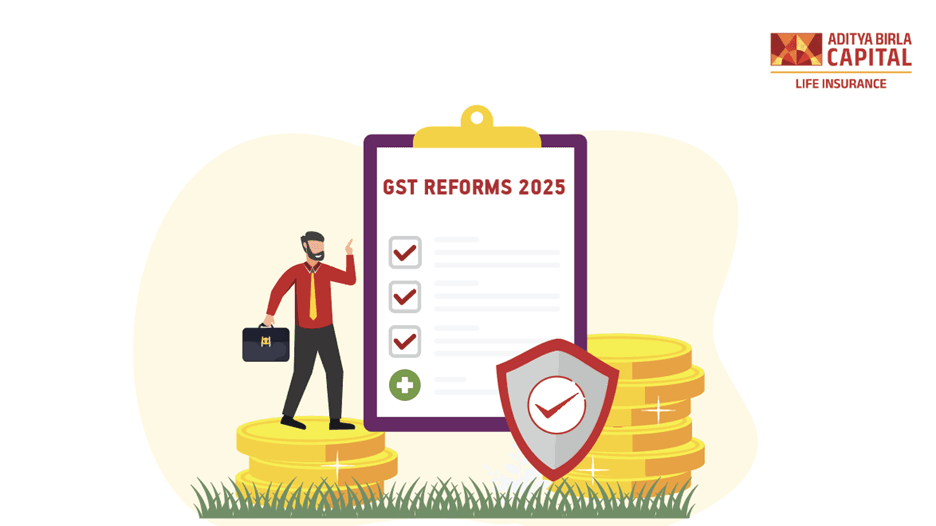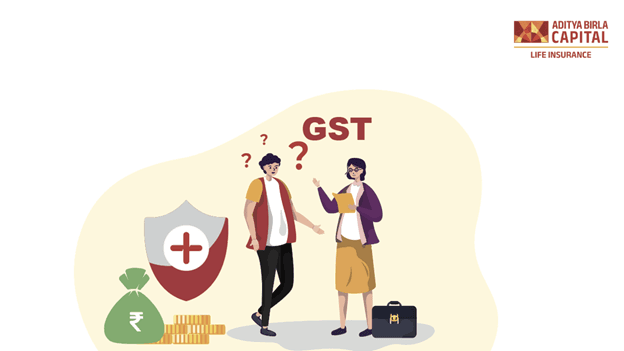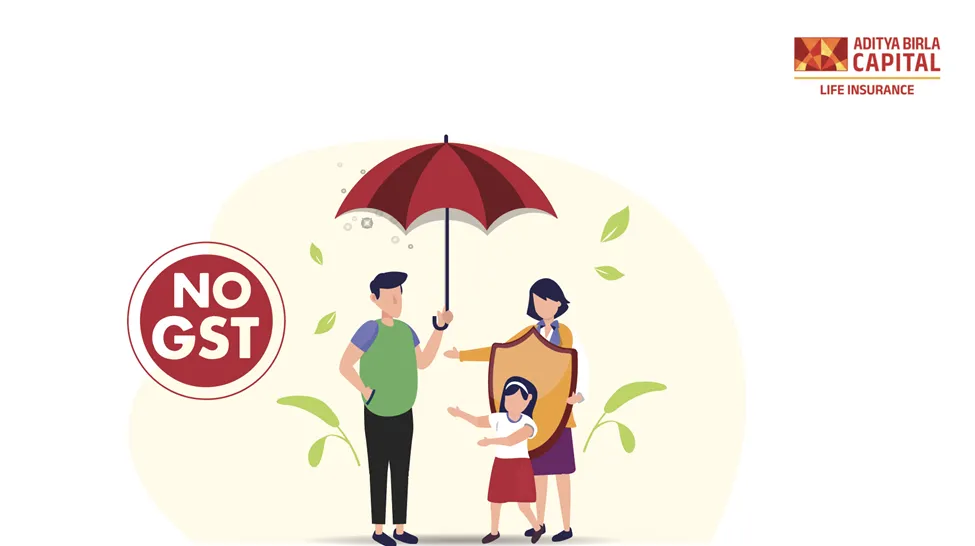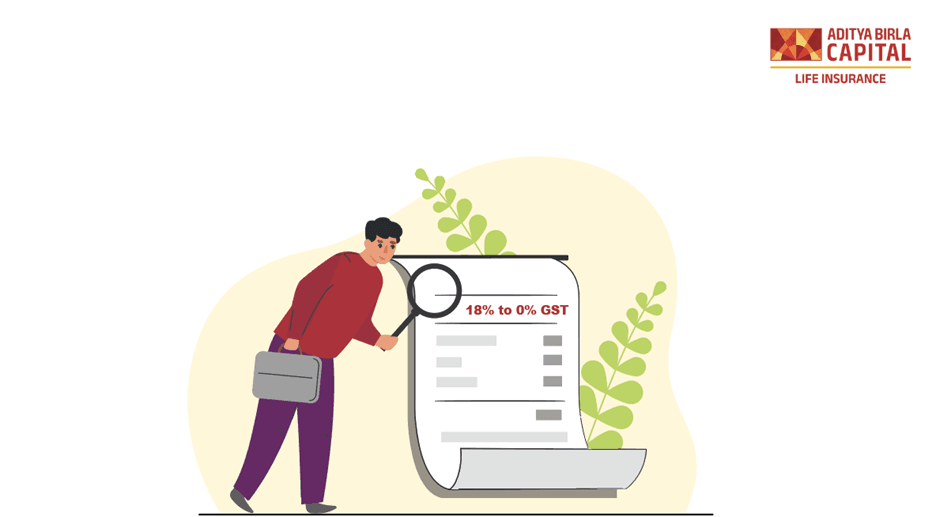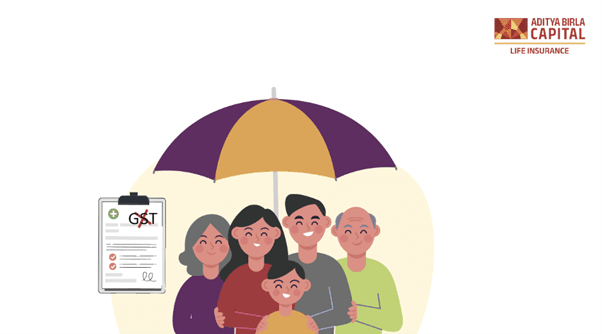For years, insurance has been viewed as something essential yet often expensive. Families understood the need for financial protection, but the added tax burden on premiums sometimes made people hesitate to buy. That’s why the announcement made at the 56th GST Council Meeting in September 2025 is being seen as a game changer, not just for policyholders but for the entire insurance industry.
The 2025 GST reforms have fundamentally reshaped the landscape of financial protection in India. With the removal of GST on life and health insurance policies, insurance has finally moved from being a “taxed service” to being recognised as a social necessity.
Let’s take a closer look at what these reforms are, why they matter, and how they are transforming the way India protects, saves, and invests.
A Quick Recap: What Changed Under the 2025 GST Reforms
Before September 2025, most insurance products, including term plans, savings plans, ULIPs, and health policies, attracted 18% GST on premiums.
This meant that a ₹20,000 premium cost ₹23,600 after tax, and none of that extra amount contributed to the policyholder’s cover or investment.
However, the 56th GST Council, chaired by the Union Finance Minister, announced a landmark reform:
From 22 September 2025, GST on life and health insurance has been reduced to 0%.
This simple but powerful decision means:
- No more GST on any life insurance policy (term, ULIP, endowment, or whole life)
- No GST on health insurance policies, including family floaters, senior citizen covers, and critical illness riders
- Add-on riders and group policies are also fully exempt
For millions of Indians, this translates to one thing, affordable protection.
Why These GST Reforms Were Needed
The government’s decision wasn’t just about tax relief. It was rooted in a much larger vision: to make insurance a part of every Indian household’s financial foundation.
Here’s why these reforms were essential.
1. To Increase Insurance Penetration
India’s life insurance penetration, as a percentage of GDP, has remained stagnant at around 4%. Health insurance coverage, while improving, still leaves large segments of the population uninsured. Removing GST directly addresses the cost barrier and encourages more families to buy protection.
2. To Support ‘Insurance for All by 2047’
The Insurance Regulatory and Development Authority of India (IRDAI) has set an ambitious goal, universal insurance coverage by 2047. The GST exemption supports this by making policies more accessible to every income group.
3. To Encourage Financial Inclusion
Rural and semi-urban households often avoid insurance because it feels like a luxury. The 0% GST reform reframes it as an essential service, aligning with the government’s financial inclusion initiatives.
4. To Simplify the System
Earlier, GST application differed across policy types, making pricing complex for insurers and confusing for customers. The reform introduces uniformity and transparency.
The Immediate Impact of the 2025 GST Reforms
The impact of this reform is already visible across the insurance ecosystem.
| Category | Before GST Reform (18%) | After GST Reform (0%) | Key Outcome |
|---|
| Life Insurance Premiums | ₹10,000 + ₹1,800 tax | ₹10,000 flat | Lower cost for buyers |
| Health Insurance Premiums | ₹25,000 + ₹4,500 tax | ₹25,000 flat | Affordable family protection |
| Riders & Add-ons | ₹5,000 + ₹900 tax | ₹5,000 flat | Easier to enhance coverage |
| Group Insurance | GST applicable | GST-exempt | Cost savings for employers |
This simple change of reducing GST to 0% is driving a ripple effect that extends from households to insurers to the broader economy.
How the Reforms Benefit Policyholders
1. Lower Premiums Across All Plans
With no tax added to your premium, you now pay only for actual coverage. This makes life and health insurance significantly more affordable, especially for young professionals and middle-income families.
2. Higher Coverage for the Same Budget
If you had been paying ₹15,000 annually for a term plan earlier, that same budget can now buy a larger sum assured. The reform effectively gives every policyholder a “built-in discount.”
3. Better Value for Long-Term Plans
For endowment or ULIP plans, where part of the premium is invested, the absence of GST means a greater share of your money goes into your investment component, improving long-term returns.
4. Easier Renewals and Less Lapse
With lower costs, policyholders are more likely to renew their policies regularly, reducing lapse rates and ensuring continuous protection.
5. Transparent Pricing
The pricing structure is simpler and easier to understand. You no longer have to calculate how much of your payment goes to taxes, every rupee you pay now works for your future.
How the Reforms Strengthen the Insurance Industry
While customers enjoy direct savings, the reform also brings structural benefits to insurers and the overall economy.
1. Expanding the Market
As affordability improves, more individuals enter the insurance net. Analysts expect a 15–20% surge in new policy purchases within the first year of implementation.
2. Higher Retention Rates
Lower renewal premiums mean fewer policy lapses, creating more predictable cash flows for insurers.
3. Simplified Compliance
The uniform 0% GST removes administrative burden for insurers who earlier managed multiple GST rates for different product categories.
4. Greater Product Innovation
With a simplified tax structure, insurers can focus more on customer-centric innovation, launching flexible, low-cost plans that reach new market segments.
5. Sector Growth and Capital Flow
Life insurance companies are major contributors to long-term capital markets. Increased participation boosts their investible funds, supporting economic development.
Impact on the Economy
Beyond individual and sector-level gains, the GST Reforms 2025 have macro-economic implications.
-
Increased Household Savings: Families save more on premiums and can redirect that money into investments, driving domestic savings rates higher.
-
Reduced Financial Vulnerability: With more citizens insured, the country’s exposure to financial shocks (like medical emergencies or income loss) reduces.
-
Support for Infrastructure Funding: Life insurers invest heavily in infrastructure bonds; higher policy inflows mean greater funding for national projects.
-
Boost to Employment: As insurance penetration rises, demand for advisors, underwriters, and support professionals grows.
The GST reforms thus tie individual well-being to national growth, a rare policy win-win.
Who Benefits the Most?
1. Middle-Class Families
The reform directly reduces the cost of protecting one’s family. For households juggling multiple financial priorities, every saved rupee matters.
2. Young Professionals
Lower entry costs encourage young earners to start financial planning early, helping them lock in lower premiums and build disciplined saving habits.
3. Senior Citizens
Older individuals, who pay higher premiums, gain immediate relief through reduced renewal costs, making continued coverage easier.
4. Employers and Organisations
Group life and health policies now come without GST, reducing expenses for companies that provide employee insurance benefits.
GST Reforms and India’s Broader Financial Vision
The removal of GST from insurance fits neatly into India’s larger financial strategy:
- Ayushman Bharat & Health for All: By making health insurance affordable, the reform complements public health initiatives.
- Pension and Retirement Planning: As savings products like annuity and life cover become more accessible, India moves toward a culture of long-term planning.
- Financial Literacy & Awareness: Simplified policies encourage more people to understand, trust, and invest in insurance products.
- Private-Public Balance: By empowering private insurers to reach more citizens, the government strengthens the partnership model for social protection.
Comparison: Before vs After GST Reforms
| Aspect | Before GST Reforms | After GST Reforms |
|---|
| GST on Life & Health Insurance | 18% GST applied on premiums | 0% GST (fully exempt) |
| Premium Affordability | Higher premiums due to added tax | Lower premiums; more cost-effective |
| Transparency in Pricing | Premium + GST calculations required | Simpler; pay only the premium amount |
| Coverage Purchased Within Same Budget | Lower coverage due to tax burden | Higher coverage possible for same cost |
| Renewal Premiums | Renewals taxed at 18% | All renewals GST-free |
| Rider Costs | Riders like CI, AD&D, WOP attracted GST | All riders become GST-free and cheaper |
| Investment Component (ULIP/Savings Plans) | Part of premium reduced due to GST | Full amount goes into protection/investment |
| Policy Lapse Rate | Higher lapse rates due to cost pressure | Expected reduction in lapses |
| Industry Compliance | Multiple GST slabs; complex admin | Uniform 0% GST; easier compliance |
| Market Growth | Moderate growth due to cost barrier | Faster expansion; higher adoption |
This shift moves India’s insurance ecosystem from a tax-burdened model to an inclusion-driven one.
Case Study: Real-Life Impact of the GST Reforms
Let’s look at an example.
Before Reform:
Meena, a 35-year-old working mother, paid ₹18,000 annually for a ₹1 crore term insurance policy. With 18% GST, her total cost was ₹21,240.
After Reform:
Post-22 September 2025, she pays only ₹18,000. The ₹3,240 she saves each year can go into her daughter’s education fund or an SIP. Over 20 years, that adds up to nearly ₹65,000 in savings, simply from a tax policy change.
That’s the quiet but powerful impact of the GST reforms.
Challenges and Industry Adaptation
Like any major reform, implementation brings short-term adjustments.
- System Updates: Insurers must recalibrate premium calculation systems and reissue policy documents with revised tax details.
- Awareness Gaps: Customers may need time to understand the new pricing structure and confirm reduced premiums.
- Market Realignment: With lower margins, insurers are expected to focus more on operational efficiency and digital growth.
However, the long-term benefits far outweigh these transitional challenges.
The Human Side of the Reform
At its heart, the 2025 GST reform is about human impact. It’s about ensuring that no family has to think twice before buying life or health protection.
Every parent who secures their child’s future, every retiree who can afford continued coverage, and every young worker starting their financial journey, all stand to gain from this policy shift.
This reform is more than a fiscal decision; it’s a commitment to financial dignity for every Indian household.
What You Should Do Now
If you’re a policyholder or considering buying insurance, this is the ideal time to review your plans.
-
Check Updated Premiums: Confirm that your insurer has removed GST from your renewal notices.
-
Increase Your Coverage: Use the savings from the exemption to raise your sum assured.
-
Add Riders: Enhance your protection with critical illness or disability covers, now more affordable.
-
Start Early: For new buyers, begin your protection journey now, while premiums are low.
-
Review Family Needs: Make sure your entire household is adequately covered under life and health plans.
These small steps ensure you make the most of the reform’s benefits.
The Road Ahead for India’s Insurance Sector
The GST reforms have set the stage for a decade of transformation. In the coming years, we can expect:
- Digital-First Insurance: Simplified products and paperless onboarding through apps and portals.
- Micro-Insurance Growth: Expansion of low-premium, short-term covers for rural India.
- Cross-Sector Partnerships: Banks, fintechs, and insurers collaborating to reach new audiences.
- Sustainable Product Innovation: Plans combining protection with health, wellness, and savings incentives.
In many ways, the GST exemption has created room for the industry to innovate without worrying about the perception of cost or complexity.
Final Thoughts
The GST Reforms 2025 are a turning point for India’s insurance landscape. By removing the 18% tax burden on life and health policies, the government has turned insurance into what it was always meant to be, a tool for protection, not a taxable product.
For individuals, it means lighter premiums, higher coverage, and easier renewals. For insurers, it means greater inclusion and innovation. For the nation, it means progress toward a financially secure and resilient future.
So, if you’ve been postponing that conversation about life or health insurance, there’s no better time than now. The cost has come down, but the value has never been higher.

